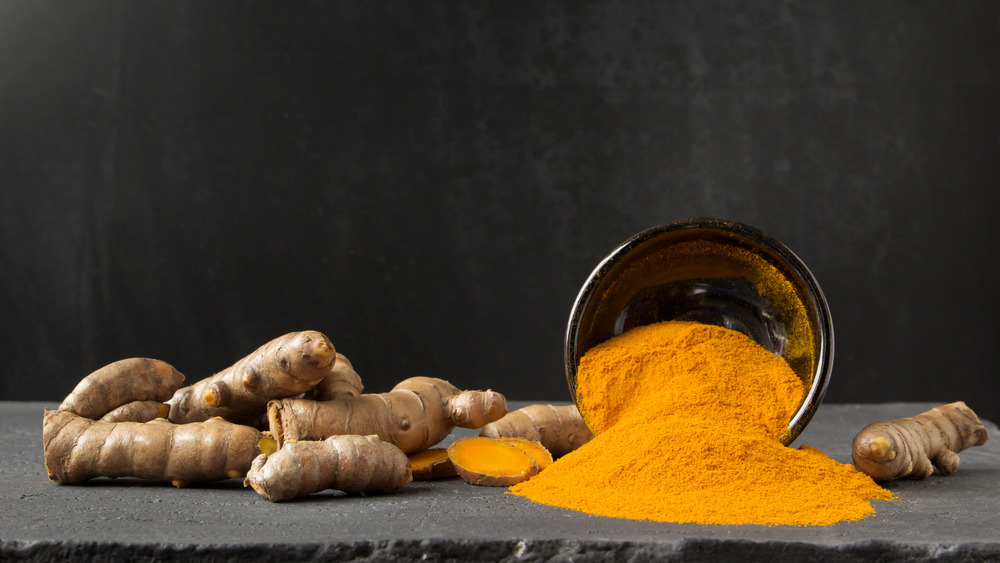Surprising Side Effects Of Too Much Turmeric
Turmeric is a popular spice that is linked to a number of health benefits. It is packed full of nutrients and antioxidants and can even reduce inflammation. But can eating too much cause unpleasant side effects?
Native to Southern Asia, turmeric is a key ingredient in a number of Indian dishes and has long been used for its medicinal properties (via Healthline). It can also be used to color food. A root stalk that is typically dried and crushed into a fine, golden powder, turmeric mostly consists of fiber, carbs, and starch. The main active component is curcumin.
It is the curcumin in turmeric that is responsible for the golden spice's health benefits. Curcumin can help reduce chronic inflammation, reduce the risk of heart attacks and heart disease, improve blood vessel function by increasing blood flow and reducing blood pressure, and improve antioxidant status. It may also prevent cancer cell growth (via Greatist).
How much turmeric should you take?
While turmeric and curcumin are usually considered safe, consuming high doses of either may cause some people to experience gastrointestinal symptoms. There are no official guidelines detailing how much turmeric is safe to consume. However, it's a good idea to only take the recommended daily amount if you're taking turmeric supplements. For some people, consuming too much turmeric can result in nausea, diarrhea, or yellow poop.
Curcumin, on the other hand, does in fact have official guidelines recommending the maximum daily intake of the compound. According to the Joint FAO/WHO Expert Committee on Food Additives, you should only consume 1.4 mg per pound of body weight per day. While some studies show that it is possible to exceed as much as 12,000 mg a day without experiencing any side effects, it's better to stay on the safe side. Consuming more than 1,000 mg curcumin may potentially cause nausea, bloating, reflux, diarrhea, skin rash, and headaches.


